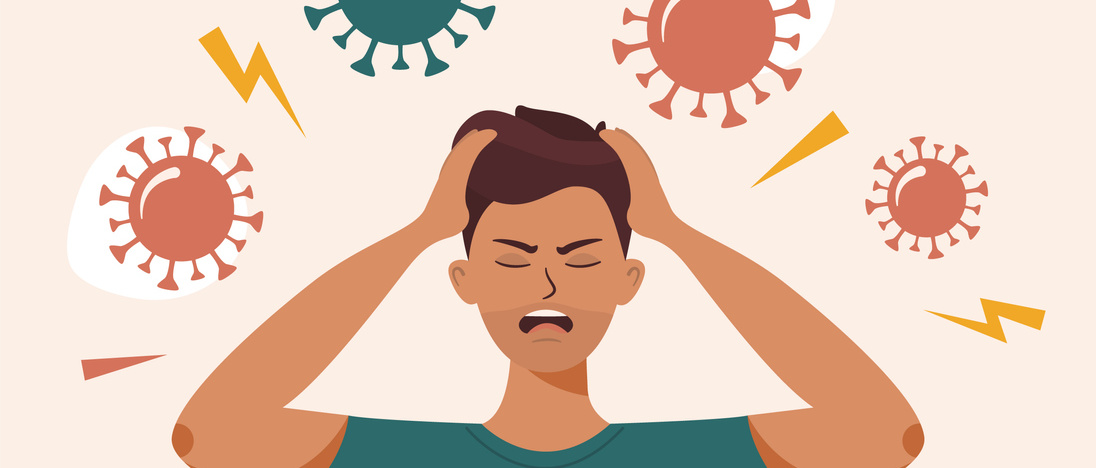
Choose a channel
Check out the different Progress in Mind content channels.

Progress in Mind

The COVID-19 global pandemic has had major impact on people living with migraine and the effects are perceived as both positive and negative from the point of view of the patient. Reports emerging include the direct impact of the virus and potential long-COVID syndrome, and indirect impact of the pandemic on healthcare access, physical, emotional, financial, and psychological health. Not all impacts are perceived as negative. Such are the findings reported by Professor Dawn Buse of the Albert Einstein College of Medicine speaking at #AHSAM21.
Professor Buse reported results of the Migraine Clinical Outcome Assessment System (MICOAS) qualitative study on the impact of the COVID-19 pandemic on people living with migraine (N=40), which were presented as a poster at #AHSAM21.1
COVID-19 has had both positive and negative impact on people with migraine
Negative impact of the pandemic
Participants in the interviews reported negative impact in three areas of life including barriers to receiving migraine treatment, increased migraine attack frequency and severity, and additional stressors due to the COVID-19 pandemic.1
A disruption to delivery of face-to-face procedures was also noted in a study of patients with chronic migraine or high frequency episodic migraine in Spain (N=67).2 The involuntary delay of onabotulinumtoxin A injections was associated with increase in frequency and severity of migraine attacks in web-based surveys of people with migraine in Spain (N=222) and Kuwait (N=1018), with 10% of patients transforming to chronic migraine in Kuwait.3,4 Nearly 80% of patients in Kuwait reported having symptoms of anxiety and/or depression.4
For some people with migraine, the pandemic has reduced access to treatment and led to increased migraine frequency and severity
Positive impact of the pandemic
In contrast, some participants in the MICOAS study reported an improvement in access to care through telemedicine and a general positive impact of the pandemic on general life, including reduced exposure to triggers, fewer concerns about the need to engage in activities outside the home and reduced guilt over cancelling social events with friends and family.1
For other people with migraine, the pandemic has reduced exposure to triggers and other stressors
In an observational study from the Italian Headache Registry (RICe) of 433 people with migraine, a reduction in headache frequency and intensity during quarantine was noted which correlated with the number of stay-at-home days.5 However, there was a tendency towards worsening of headache frequency in northern Italy where the pandemic was very impactful.5 Conversely, a significant reduction of migraine symptoms intensity and frequency was observed in pediatric patients during the lockdown phase in northern Italy.6
In conclusion, Professor Buse said that the impact of the pandemic and social distancing from the point of view of people with migraine has resulted in both positive and negative experiences. For some patients, many additional stressors were experienced resulting in increased attack frequency. Conversely, for other people a reduction in outside pressures resulted in more positive experiences, with increased sleep, consistent schedules a general slowing down of activities and fewer social pressures.
Biobehavioral therapies and practices are essential for coping and maintaining balance at any time, especially during times of prolonged stress
Our correspondent’s highlights from the symposium are meant as a fair representation of the scientific content presented. The views and opinions expressed on this page do not necessarily reflect those of Lundbeck.